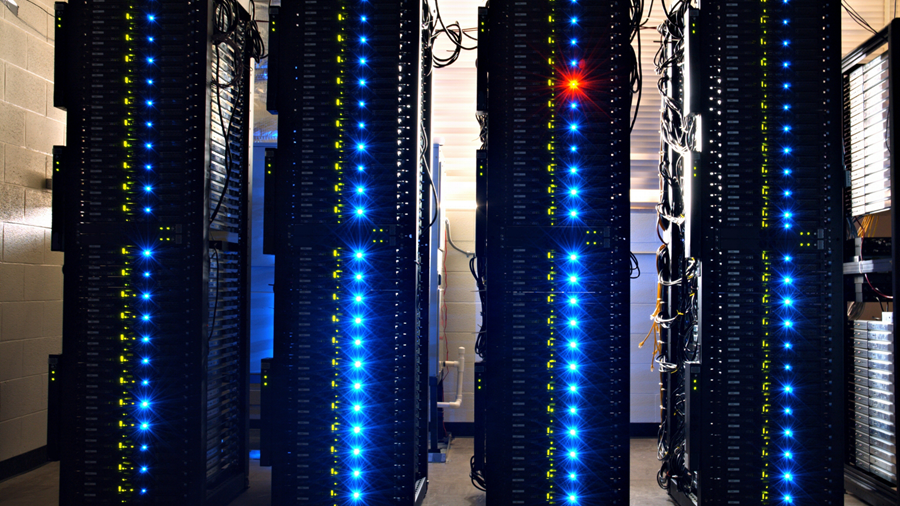What is Cluster Computing?
Computers were introduced to reduce the human effort in solving problems and also to increase the precision and accuracy of the calculated results. In general, simple tasks can be performed with a single computer that has limited processors and memory.
When the task gets humongous, then the computing system has to be scaled out to perform the same task. And when it comes to scaling, there are two options viz. vertical scaling and horizontal scaling. Vertical scaling is using the same machine and adding more processors, RAM, and hard disk to it. And horizontal scaling is adding more similar machines in parallel to perform the task.
As the complexity of the problem increases and you wish to decrease the time taken for solving the problem, it is always preferred to opt for horizontal scale-out. A similar concept is being used in cluster computing. Let us understand everything about cluster computing in this post.
Table of contents
- Introduction to Cluster computing
- Types of Cluster computing
- Conclusion
Introduction to Cluster computing
Cluster computing is the process of performing a computational task across multiple computers which are connected generally in the local area network (LAN) and perform like a single entity. Each computer in the network is represented as a node. The nodes execute the task in tandem making it look like one large system responding to the user requests. This is termed as transparency of the system. Cluster computing plays a major role in high traffic applications which have the requirement to extend the processing capability and with zero downtime.
Benefits of Cluster computing include -
Cluster computing is relatively inexpensive when compared to large server machines. Not just for scalability, you can also use cluster computing to increase the available time, load balancing, processing speed, etc.
The nodes that are connected in cluster computing are identical machines. They can be either tightly or loosely coupled through the dedicated network. They have the same home directory.
Hardware configuration differs based on the networking technologies. It can be either Open or Closed, where open clusters are the ones that make the node available over the internet and can be accessed through IPs. As they are publicly available, they need to have enhanced security features. Whereas, in the case of closed clustering, the nodes behind a gateway node increase their protection.
Key components of cluster computing include -
- Cluster nodes
- Cluster Operating System
- Switch or node interconnect
- Network switching hardware
Below are a few areas where cluster computing is being implemented -
- Data mining
- Applications of aerodynamics and astrophysics
- Weather forecasting
- Image rendering and processing
- E-commerce applications
- Earthquake and tornado simulation
- Petroleum reservoir simulation
- Electromagnetics
- Nuclear simulations
Types of cluster computing
Cluster computing can be segmented based on the requirement and the problem it solves. For example, to increase the availability time, to do load balancing, etc. On that note, here are the broad categories of clusters -
- Load balancing clusters
- High-availability clusters
- High-performance clusters
Load balancing clusters
As the network load increases, to extract the maximum out of every system at optimal performance, it is necessary to balance the loads within the clusters by routing the requests equally between the nodes.
To increase the network capability and performance, load balancing clusters are used. In this type, the nodes are cohesive with all the instances and they listen to each request. Though all the nodes operate in a cluster, they will not be processing a single request at a single time.
Incoming requests are distributed across several nodes which have similar program/content. Separate algorithms are used to balance out the request processing in each node. Some common algorithms are Round robin, Weighted round-robin, Least connections, Weighted least connections, and Random.
Scalability is another feature that comes along with load balancing. In the connected load balancing network, the request that needs to be processed by each node can be configured. Load balancing clusters are predominantly used in the web applications hosting environment.
High availability clusters
The possibility of systems crashing and going down under extreme tasks is high. So, high availability is required to achieve stable computing services. This is quite common in database servers, e-commerce industries, and so on.
Also known as failover clusters, they ensure that the application or system that is present in the cluster has no downtime. To achieve it, redundant nodes and clusters are used. Even in case of system failures, if an entire cluster is down, the backup clusters come into the picture. The processing power drops but it ensures availability throughout.
High-performance clusters
They use supercomputers along with computer clusters to solve complex and advanced computational problems. They make use of the parallel processing power of the nodes. They are predominantly used to compute climate models.
High availability + Load balancing
The combination of two clusters helps in achieving extended performance with lesser downtime. This kind of solution is implemented for Internet Service Providers.
Conclusion
Cluster computing is cost-effective, expandable, and ensures the high availability of resources. They can be either loosely or tightly coupled to bind them together so that they can work as a single system to achieve the task. Clusters can be created based on the requirements (high performance, high availability, or load balancing). Which makes it easier for the users to create it based on the system's needs. Also, it is possible to achieve load balancing along with high availability.
